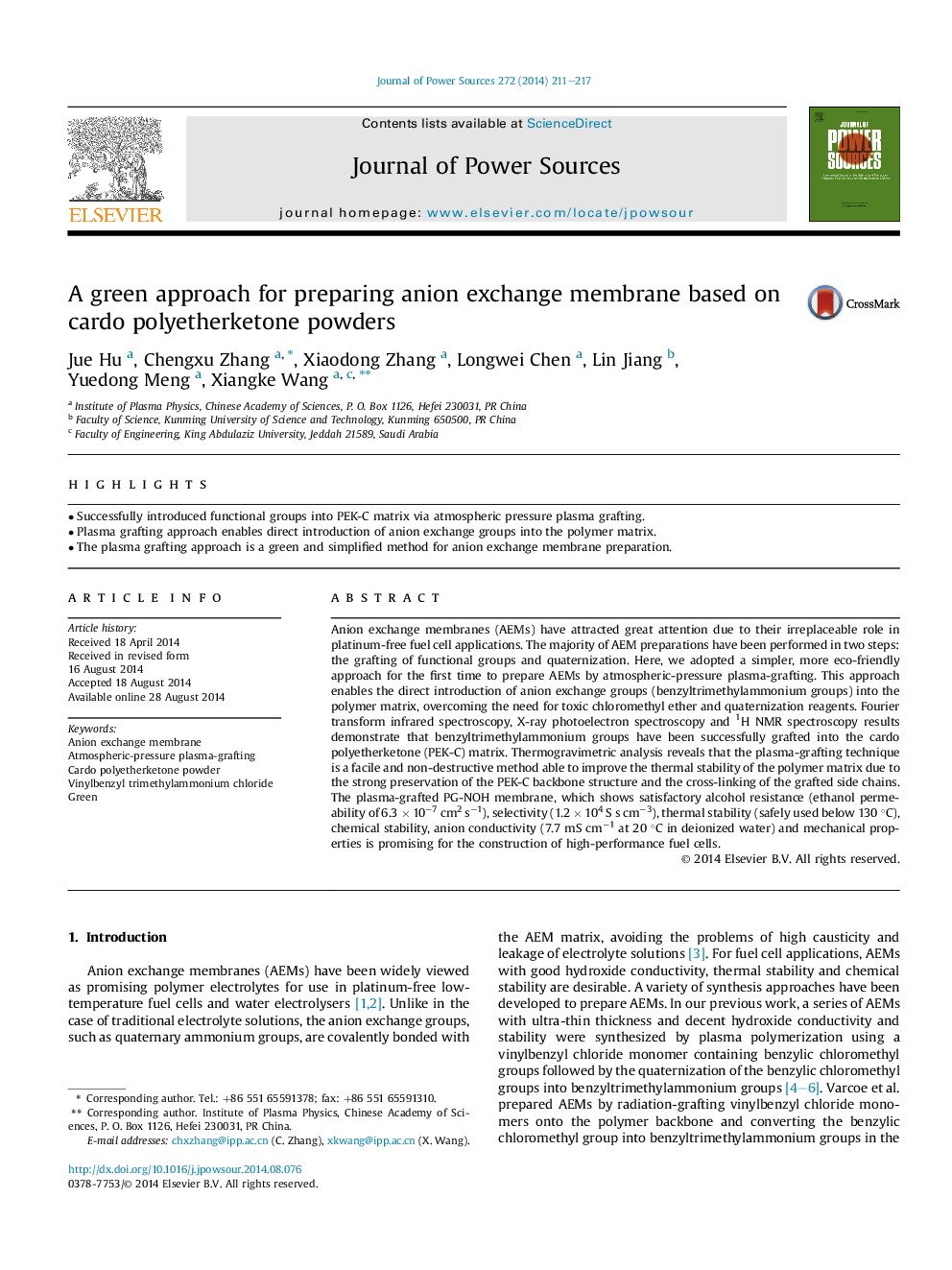| Article ID | Journal | Published Year | Pages | File Type |
|---|---|---|---|---|
| 1283929 | Journal of Power Sources | 2014 | 7 Pages |
•Successfully introduced functional groups into PEK-C matrix via atmospheric pressure plasma grafting.•Plasma grafting approach enables direct introduction of anion exchange groups into the polymer matrix.•The plasma grafting approach is a green and simplified method for anion exchange membrane preparation.
Anion exchange membranes (AEMs) have attracted great attention due to their irreplaceable role in platinum-free fuel cell applications. The majority of AEM preparations have been performed in two steps: the grafting of functional groups and quaternization. Here, we adopted a simpler, more eco-friendly approach for the first time to prepare AEMs by atmospheric-pressure plasma-grafting. This approach enables the direct introduction of anion exchange groups (benzyltrimethylammonium groups) into the polymer matrix, overcoming the need for toxic chloromethyl ether and quaternization reagents. Fourier transform infrared spectroscopy, X-ray photoelectron spectroscopy and 1H NMR spectroscopy results demonstrate that benzyltrimethylammonium groups have been successfully grafted into the cardo polyetherketone (PEK-C) matrix. Thermogravimetric analysis reveals that the plasma-grafting technique is a facile and non-destructive method able to improve the thermal stability of the polymer matrix due to the strong preservation of the PEK-C backbone structure and the cross-linking of the grafted side chains. The plasma-grafted PG-NOH membrane, which shows satisfactory alcohol resistance (ethanol permeability of 6.3 × 10−7 cm2 s−1), selectivity (1.2 × 104 S s cm−3), thermal stability (safely used below 130 °C), chemical stability, anion conductivity (7.7 mS cm−1 at 20 °C in deionized water) and mechanical properties is promising for the construction of high-performance fuel cells.
